Choosing the best outdoor lighting for your Georgia home is about more than just aesthetics, it’s a balance of functionality, energy efficiency, and Southern charm. Georgia’s humid climate, warm summers, and mild winters require durable, weather-resistant fixtures that can withstand the elements while enhancing your home’s curb appeal. Whether you’re looking to illuminate pathways for safety, create a cozy ambiance for outdoor gatherings, or boost security with motion-sensor lights, selecting the right lighting involves considering factors like style, brightness, and energy efficiency. In this guide, we’ll explore the top outdoor lighting options to help you brighten your home beautifully and effectively.
Best Outdoor Lighting Ideas to Instantly Elevate Your Yard
What Are the Best Outdoor Lighting Options for Georgia Homes?
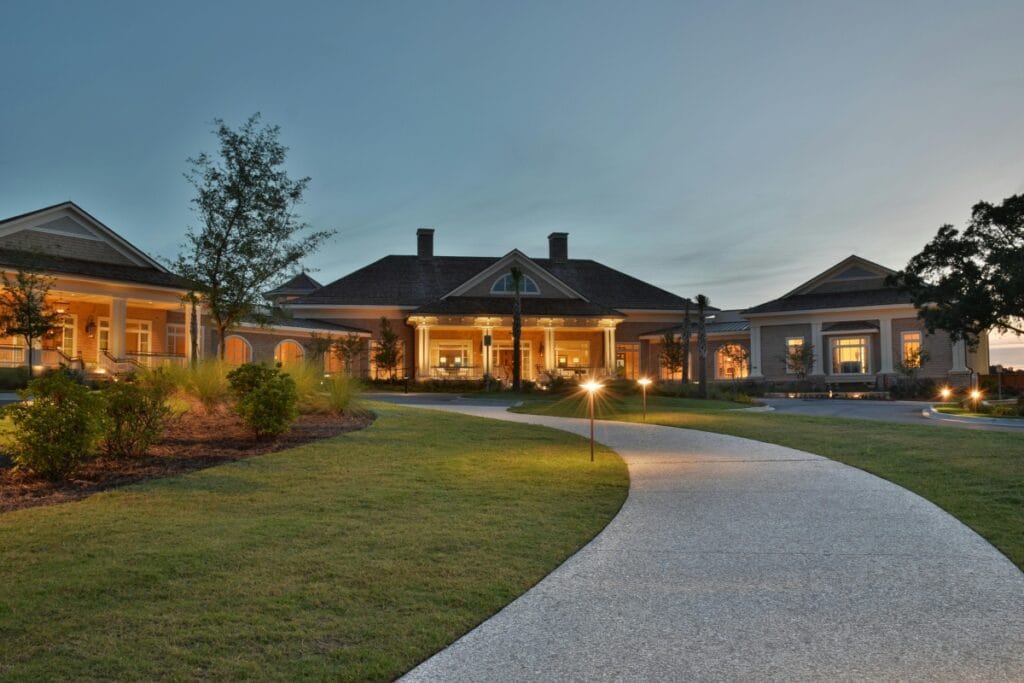
The best outdoor lighting in Georgia must balance style, durability, and efficiency. Homeowners typically choose a combination of landscape accents, security illumination, and pathway or deck fixtures to create an inviting yet safe environment. With high humidity, frequent storms, and warm temperatures, fixtures need to resist moisture and heat while minimizing energy use. Advances in LED technology and smart controls allow properties to look great at night without driving up utility bills.
How Landscape Lighting Brings Your Garden to Life
Adding lights around flower beds, water features, and architectural elements turns a yard into a dynamic nighttime display. Uplights placed at the base of trees and large shrubs draw the eye upward, showcasing bark textures and canopy shapes. Downlights mounted on eaves or poles cast gentle pools of light over garden paths, making evening strolls safer while highlighting ornamental grasses or perennial borders.
Energy-efficient LED spotlights and bollard lights—tall, narrow fixtures—combine narrow beam angles with low power consumption, perfect for illuminating focal points without flooding the entire area. Choosing fixtures with adjustable brightness and color temperature ensures that each garden scene—from a rose arbor to a koi pond—retains its intended mood, whether it’s a warm glow for family gatherings or a cooler hue to suggest mystery.
Best Lighting to Protect and Secure Your Property
Security lighting serves two purposes: it deters potential intruders and provides clear visibility around entryways, driveways, and service areas. Motion-activated floodlights with high-intensity LEDs turn on only when movement is detected, conserving energy while startling wildlife or uninvited visitors. Spotlights mounted near doors and windows can be integrated with alarm systems, triggering a brief flash to draw attention and discourage approach.
Waterproof, rust-resistant housings ensure these fixtures operate reliably through summer downpours and occasional freezes. Dusk-to-dawn sensors automate nighttime coverage, so you don’t have to remember to flip switches. By strategically placing lights at corners of the house and near vulnerable angles, homeowners create overlapping zones of illumination that leave no dark corners for unwanted guests to hide.
Safe, Stylish Pathway and Deck Lighting
Pathway lighting is about more than guiding steps—it defines the flow of outdoor living. Low-voltage LED fixtures placed along sidewalks, patios, and garden edges cast a soft, even glow that prevents tripping hazards and emphasizes landscape curves. Recessed deck lights installed flush with decking boards deliver subtle underfoot illumination without obstructing furniture arrangements. Wall-mounted sconces and step lights add another layer of safety by marking stair risers and porch edges.
Look for fixtures rated IP65 or higher to withstand humidity and insect exposure, and choose warm white LEDs for their natural, sunset-like appearance. When these fixtures are paired with dimmers or smart timers, they switch on as dusk falls and adjust brightness according to activity—from bright settings for a weekend barbecue to a gentle glow for late-night relaxation.
How Do Georgia’s Climate and Landscape Affect Outdoor Lighting Choices?
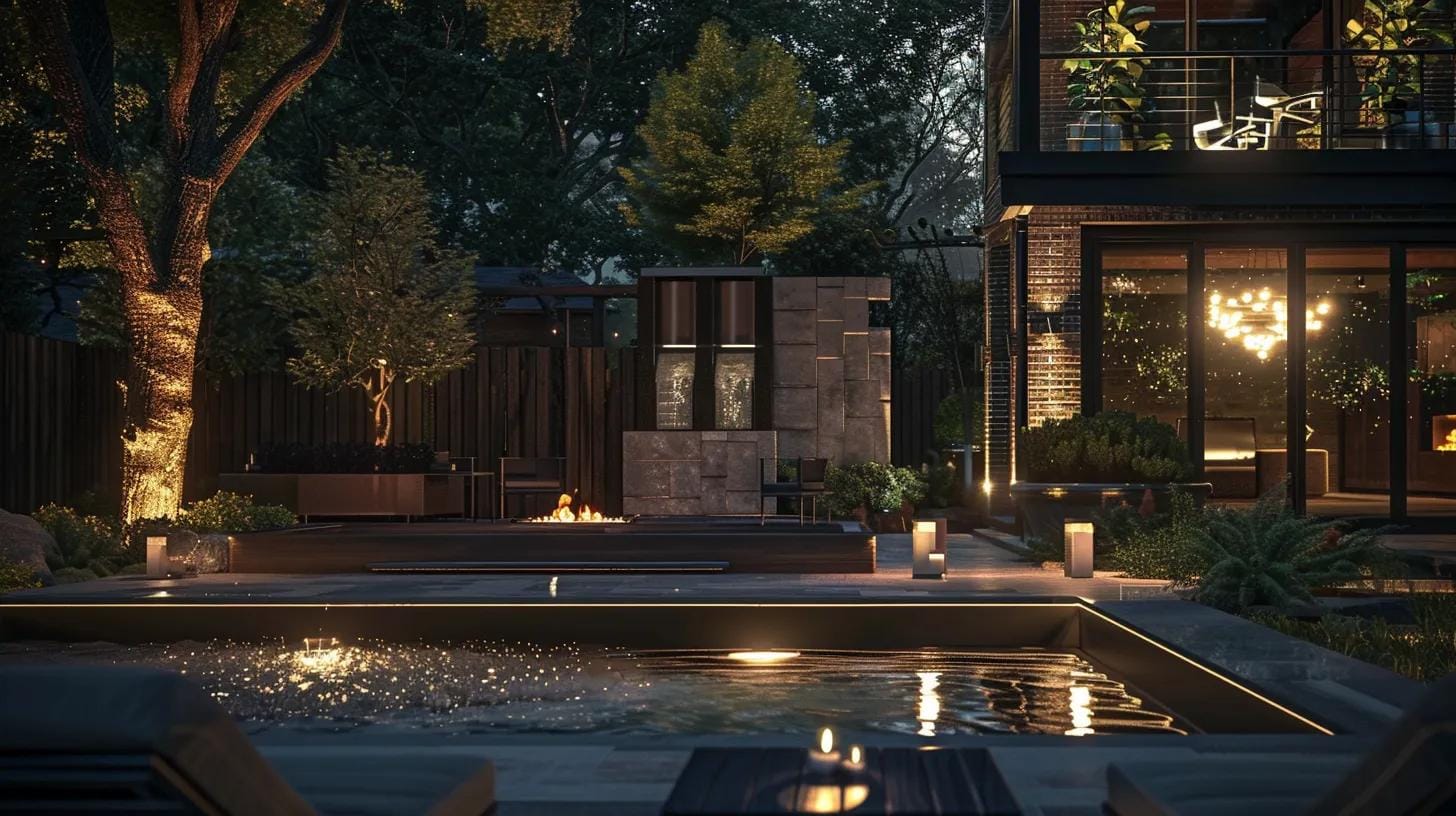
Georgia’s warm, humid summers and frequent afternoon storms place heavy demands on the best outdoor lighting. Fixtures must withstand moisture, temperature swings, and intense sunlight without corroding or losing brightness. At the same time, the state’s varied settings—from suburban yards to wooded retreats—call for designs that blend with architecture and natural surroundings. Homeowners must strike a balance between visual appeal and rugged construction, choosing lights that enhance gardens, patios, and pathways while standing up to local conditions.
What Weather-Resistant Features Should Georgia Homeowners Look For?
Durability starts with proper sealing. Quality outdoor fixtures feature fully waterproof housings and sealed wiring connections that block rain and humidity. Look for fixtures coated with UV-resistant finishes to prevent fading and cracking under strong summer sun.
Metals such as anodized aluminum or marine-grade stainless steel resist rust, even when mounted near coastal areas where salt spray can accelerate corrosion. Finally, fixtures rated at least IP65 ensure protection from heavy downpours and airborne dust, making them suitable for everything from open patios to garden edges.
How Does Georgia’s Humidity Impact Lighting Fixture Selection?
Persistent humidity can lead to condensation inside fixtures, shorting circuits or growing mold on internal surfaces. Fixtures designed for wet locations often incorporate small vents or desiccant chambers that allow trapped moisture to escape while keeping water out. Advanced LED modules use electronic drivers sealed in epoxy or silicone to prevent moisture damage and maintain consistent light output.
Anodized metal finishes and powder-coated surfaces further shield components from corrosion. By choosing moisture-tolerant designs, homeowners ensure their lighting continues to operate reliably through muggy summer nights and into the cooler, wetter months of fall and winter.
Why Is Energy Efficiency Important for the Best Outdoor Lighting in Georgia?
High summer energy use can lead to elevated electricity bills, so selecting efficient lighting is both practical and economical. Modern LED fixtures consume a fraction of the power required by traditional halogen or incandescent bulbs, yet deliver equivalent or greater brightness. Integrating solar-powered lights in garden beds or along remote pathways reduces wiring needs and taps into Georgia’s plentiful sunshine.
Adding controls such as motion sensors and photo-cells ensures lights only turn on when needed—illuminating driveways and entries at dusk, then switching off automatically at dawn or when no movement is detected. Dimmers and smart timers offer further savings by allowing precise adjustments to brightness levels based on specific activities, from evening gatherings to overnight security. Together, these strategies cut energy consumption, lower utility costs, and reduce the home’s carbon footprint without compromising safety or style.
How Can You Customize the Best Outdoor Lighting to Match Your Georgia Home’s Architecture?
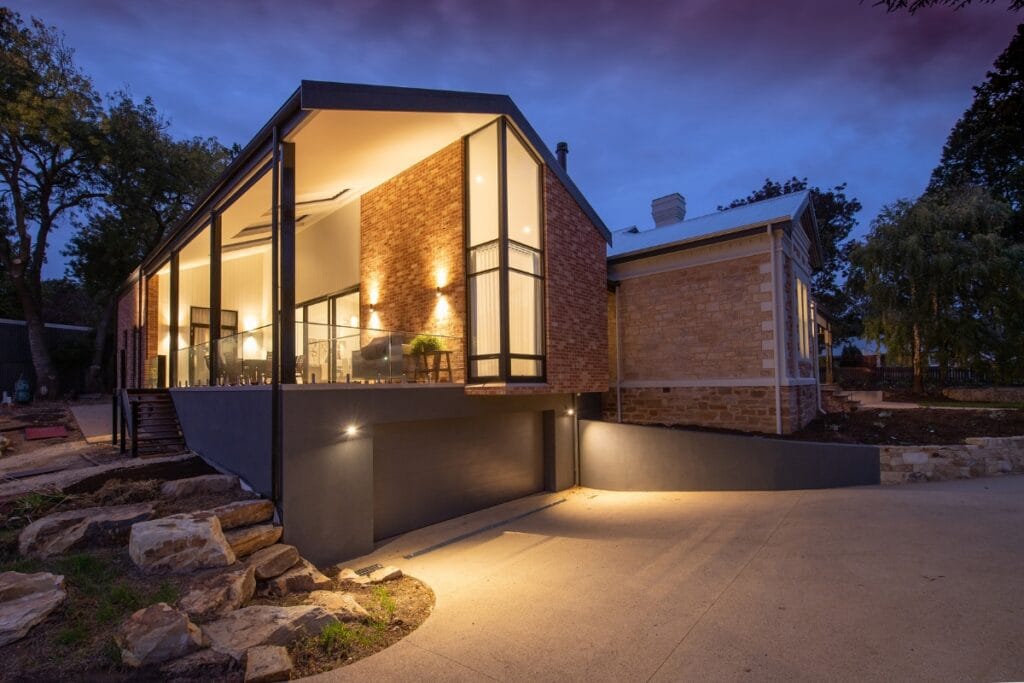
Tailoring outdoor lighting to your home’s architectural style ensures that fixtures look like a natural part of the design rather than an afterthought. By selecting shapes, finishes, and light temperatures that echo your home’s materials and details, you can highlight its best features while providing the illumination needed for safety and ambiance. Thoughtful placement and smart controls complete the picture, allowing you to adjust brightness and timing to suit different occasions.
Lighting Designs That Complement Traditional Georgia Styles
Homes with classic or colonial influences benefit from fixtures that honor their historic charm. Lantern-style wall lights or carriage lamps in brass or copper finishes pair beautifully with brick facades and white columns. These metals develop a subtle patina over time, reinforcing a sense of timeless elegance.
Opt for bulbs that emit a warm glow—around 2700 Kelvin—to maintain the cozy, inviting look of gas-lit lanterns without the maintenance. By flanking front doors, lining porches, and marking staircases with matching sconces, you create a cohesive streetscape that accentuates architectural lines and adds depth at night.
Using Architectural Lighting to Highlight Key Features
To draw attention to unique construction details, such as arched doorways, carved moldings, or textured stonework, use directional fixtures that cast crisp shadows and reveal surface relief. Low-voltage spotlights installed at ground level can illuminate stone columns or water features, while recessed lights tucked under roof overhangs wash exterior walls in soft, even light.
LED strip lighting hidden along rooflines, beneath railings, or inside open eaves provides a subtle glow that outlines the home’s silhouette and helps define property boundaries. Backlighting shrubs and trees creates a halo effect that adds visual interest without overwhelming the eye. The result is a dynamic interplay of light and shadow that brings historic craftsmanship to life after dark.
Smart Lighting Options for Modern Georgia Homes
Integrating outdoor lights into a home automation system gives homeowners precise control over color, intensity, and schedules. Smartphone apps and voice assistants let you program scenes—bright illumination for driveway arrivals, dimmed paths for late-night strolls, or colored accents for holidays and special events.
Motion sensors can trigger pathways and security lights only when needed, conserving energy and extending lamp life. Many smart fixtures now come with weatherproof ratings suitable for Georgia’s humid climate and sudden storms, ensuring reliable performance year-round. With the ability to group zones—front porch, garden, deck—you can tailor lighting to match any outdoor activity, from backyard barbecues to quiet evenings on the patio.
What Are the Benefits of Professional Outdoor Lighting Installation in Georgia?
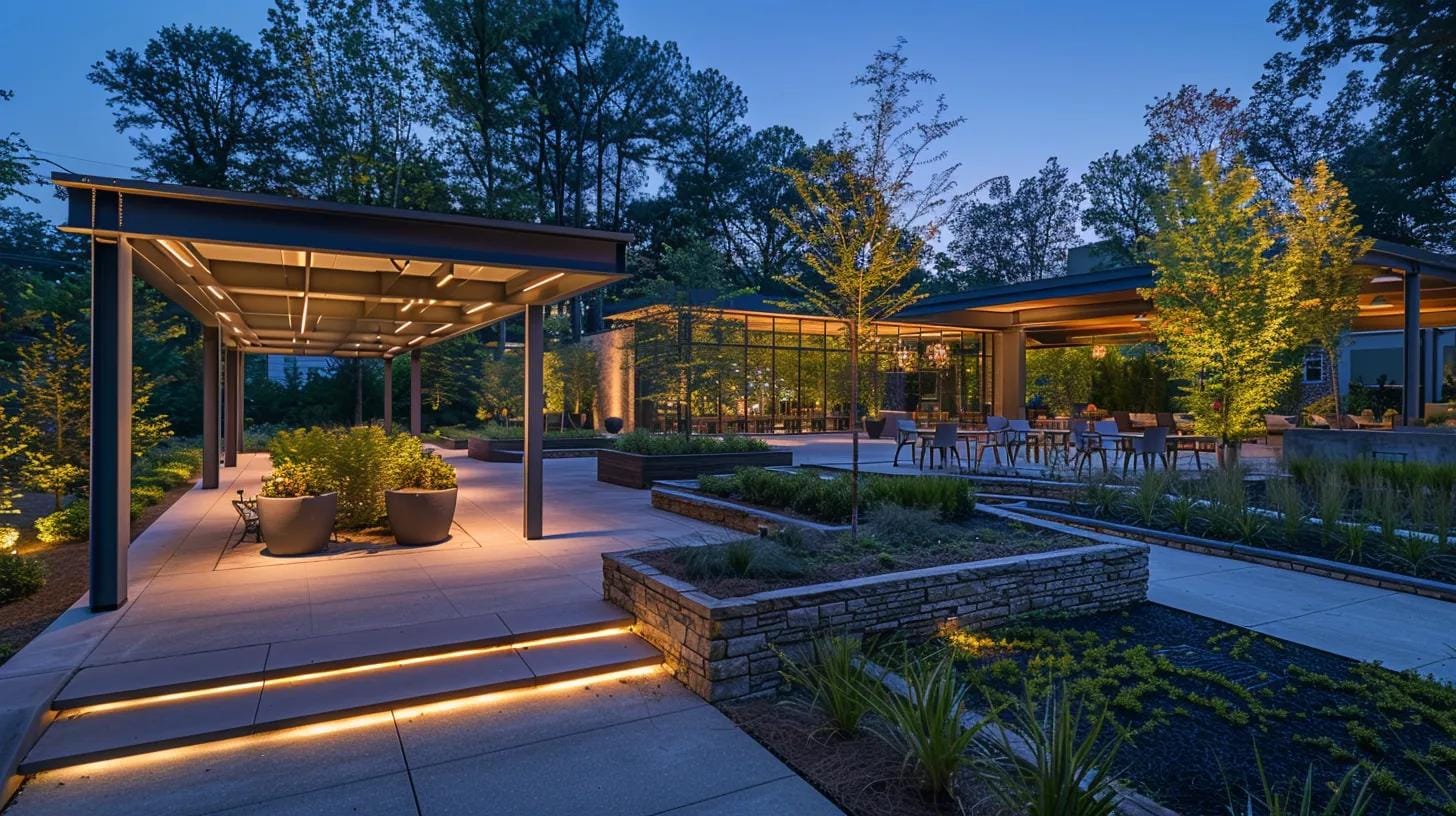
Hiring a professional to install the best outdoor lighting ensures that your system meets safety codes and functions reliably over time. Certified installers bring the technical expertise needed to wire fixtures correctly, preventing risks such as water intrusion or electrical faults. T
hey also understand Georgia’s climate challenges—high humidity, heavy rains, and intense sun—and select materials and finishes that resist corrosion and fading. Beyond safety and durability, professional installation enhances a home’s appearance through precise calibration of light placement and beam angles. Well-placed fixtures highlight architectural features, accentuate landscaping, and create balanced illumination that feels both inviting and secure.
Why Choose Certified Installers for Safety and Longevity?
Certified lighting professionals follow industry standards and local regulations to ensure every component—from low-voltage transformers to weatherproof junction boxes—is installed according to best practices. Proper grounding and cable protection help prevent shorts and fire hazards, while sealed fixtures and gaskets keep moisture out of sensitive electronics.
Experts also recommend high-quality fixtures and components with strong warranties, saving homeowners from frequent repairs and replacements. By avoiding the common pitfalls of DIY installations—improper wire splices, incorrect voltage calculations, or unstable fixture mounting—certified installers deliver a lighting system that continues to perform safely and effectively for years.
How Does Professional Installation Improve Lighting Performance?
Before any wires are run, professionals conduct a thorough site assessment to determine the best locations for fixtures. They consider sight lines, obstacle glare, and the interplay between various light layers—pathway, accent, and security lighting. By mapping out beam spreads and aiming angles, they achieve even coverage without dark spots or overly bright glare.
This measured approach balances functional needs, such as illuminating steps and driveway entrances, with aesthetic goals, like highlighting specimen trees or garden walls. Many installers also integrate advanced controls—photo sensors, timers, and motion detectors—to automate lighting schedules, reduce energy use, and adjust dimming levels according to occupancy or ambient light, delivering both convenience and cost savings.
What Should You Expect During the Installation Process?
The process begins with a consultation and site survey, during which the installer reviews architectural plans, discusses lighting objectives, and inspects existing electrical infrastructure. Based on this evaluation, they create a detailed plan that outlines fixture types, placement, wire routes, and control systems. Once the design is approved, installation proceeds with minimal disruption: low-voltage wiring is buried underground or run along eaves, fixtures are mounted and aimed, and all connections are sealed against moisture.
After installation, the system undergoes rigorous testing to verify that each light turns on when intended, that circuits are correctly fused, and that control settings work as programmed. The final step involves a walk-through with the homeowner, explaining how to adjust timers, override automatic schedules, and perform basic maintenance like cleaning lenses and replacing bulbs.
With professional installation, Georgia homeowners receive not only a tailored lighting design but also a dependable system backed by technical support and warranties, ensuring a beautifully lit exterior that stands up to local conditions and enhances both safety and curb appeal.
How to Maintain and Troubleshoot Outdoor Lighting in Georgia
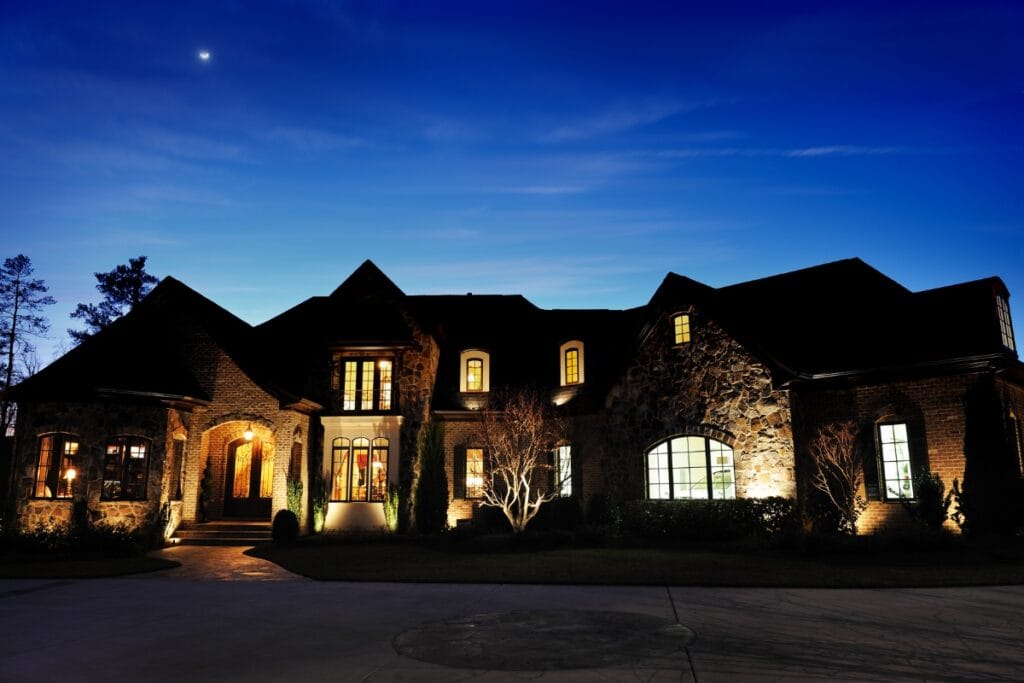
Proper upkeep keeps the best outdoor lighting working reliably and looking its best despite Georgia’s humid summers and heavy storms. By developing a simple maintenance routine and knowing how to address common problems, homeowners can avoid costly repairs and ensure their lighting remains both functional and attractive year-round.
Routine Maintenance Tips for Georgia Homeowners
Begin by inspecting each fixture at least twice a year—ideally in spring and fall. Look for signs of corrosion, cracked lenses, or loose mounting hardware. Wipe down lenses and housings with a soft cloth and mild detergent to clear away dirt, pollen, and insect debris that can reduce light output and contribute to overheating.
Replace any burnt-out bulbs promptly, choosing the correct wattage and weather-rated type. While you’re at it, examine exposed wiring connections and ensure that low-voltage wires are free of damage and properly buried or secured. Test motion sensors, photocells, and smart-control modules to confirm they respond to movement and ambient light changes. Before the rainy season, tighten screws and brackets on all fixtures to prevent water intrusion and avoid loosening caused by high winds.
Identifying and Fixing Common Outdoor Lighting Problems
Flickering or dim lights often result from accumulated grime on lenses or loose connections. Start troubleshooting by wiping down the fixture and tightening both the bulb and its socket. If flickering continues, test the bulb in a known-working fixture to rule out a defective lamp. For low-voltage systems, use a multimeter to measure transformer output and line voltage; low readings point to transformer or wiring issues rather than the fixture itself.
Corrosion inside the housing can also cause poor contact—opening the fixture, cleaning contacts with a small wire brush, and reconnecting with dielectric grease restores conductivity. Motion-activated lights that fail to turn on may simply need their sensors recalibrated or reset; consult the manufacturer’s instructions for proper adjustment. When a fixture shows visible cracks or rust that can’t be cleaned or sealed, replacement is the safest option.
Deciding When to Upgrade or Replace Fixtures
Outdoor lighting designs and technologies evolve quickly. Consider replacing aging fixtures when they no longer shed adequate light even after cleaning and bulb replacement or when their finishes have corroded beyond repair. Sudden spikes in energy bills can indicate that older halogen or incandescent fixtures are wasting power. Upgrading to LED models with integrated drivers cuts energy use by up to 80 percent and extends bulb life to 25,000 hours or more.
New smart fixtures also provide remote control, color temperature adjustment, and scheduling features that improve convenience and allow for customized lighting scenes. An annual review of your lighting system—checking on energy consumption, fixture condition, and new product developments—helps determine whether incremental replacements or a full lighting overhaul will deliver better performance and value.
What Are the Cost Factors and Energy Savings of the Best Outdoor Lighting in Georgia?
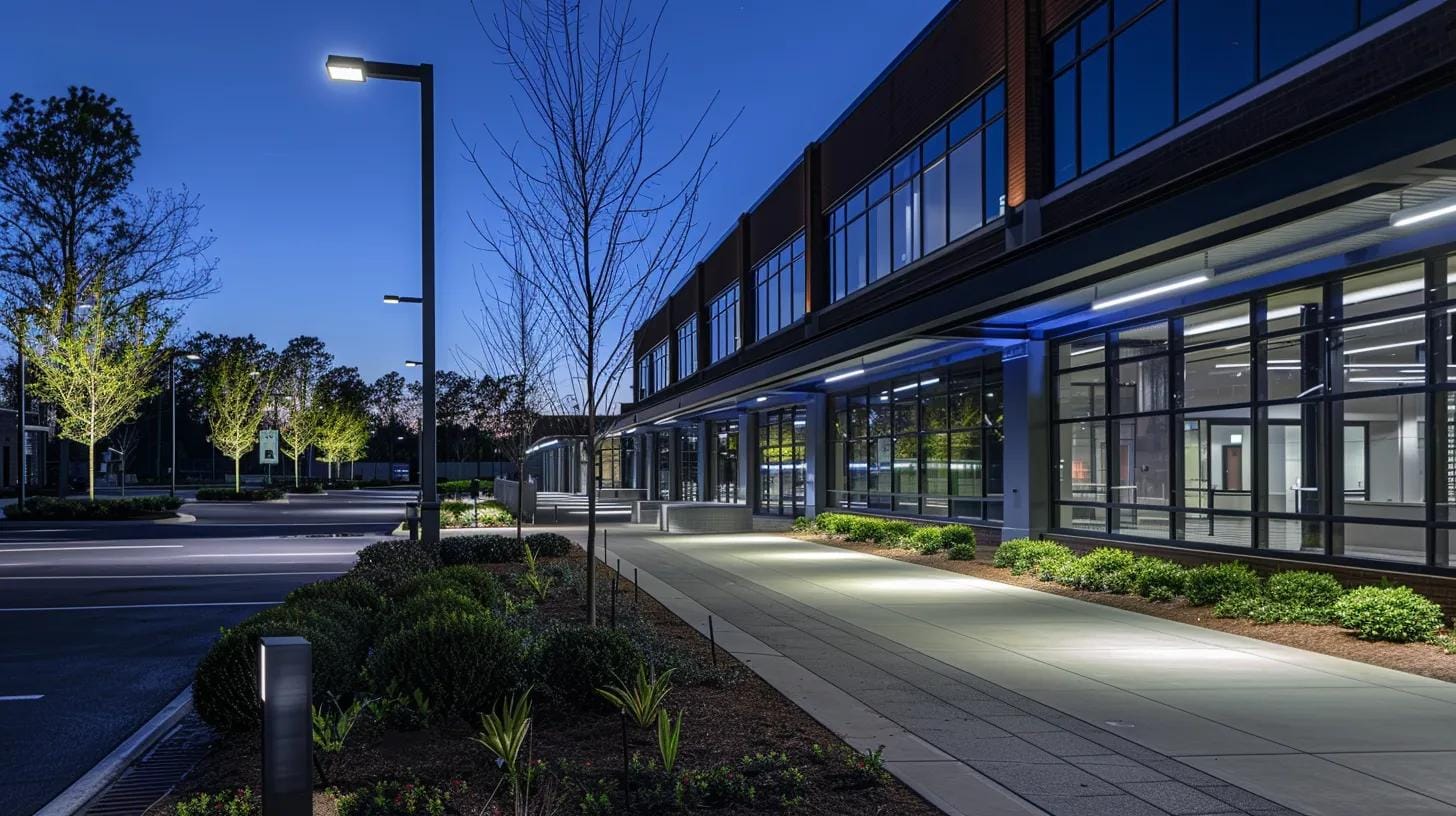
Outdoor lighting budgets depend on a variety of elements, including the size of the property, the number and type of fixtures, and the complexity of the design. A small walkway lined with low-voltage lights will cost less than a full landscape and security system that includes wall sconces, floodlights, and spotlights aimed at trees and architectural features.
Weather-resistant materials and quality finishes increase initial outlay, but these fixtures stand up to Georgia’s humidity and storms, reducing the need for replacements and repairs over time. Labor costs vary with site conditions and the amount of wiring required, while additional features—such as smart controls, timers, and dimmers—raise the price but deliver greater convenience and efficiency.
How Much Does the Best Outdoor Lighting Installation Typically Cost in Georgia?
Basic pathway lighting for a modest yard can start in the mid-hundreds of dollars, covering a handful of stakes or bollards wired to a low-voltage transformer. More extensive installations, where multiple zones are wired and controlled separately, tend to run between $1,000 and $5,000.
This range reflects not only the hardware but also professional planning, trenching, mounting, and programming of control systems. High-end projects that incorporate custom fixtures, wiring hidden in pavers or decking, and integrated security lighting may push the budget toward the upper end of that spectrum. Choosing durable, watertight fixtures and proper installation prevents water damage and electrical faults, avoiding costly callbacks in a humid climate.
What Energy-Saving Technologies Reduce Long-Term Costs?
Shifting to LED bulbs is one of the most effective ways to cut electricity usage, since LEDs consume up to 80 percent less power than traditional halogen or incandescent lamps and can last 25,000 to 50,000 hours. Solar-powered fixtures eliminate wiring and draw their energy from sunlight, making them ideal for remote garden areas or pathway markers, though performance depends on adequate sun exposure.
Motion sensors, photo-cells, and programmable timers add another layer of savings by ensuring lights operate only when needed—illuminating driveways or backyard areas at nightfall, then switching off or dimming during inactive hours. When paired with a smart-home system, outdoor lights can adapt to seasonal changes and alert homeowners to unexpected activity, all while minimizing wasted energy.
Are There Local Incentives or Rebates for Energy-Efficient Lighting?
Georgia utilities and state energy programs often provide rebates for homeowners who upgrade to certified, high-efficiency lighting products. These incentives can cover a portion of the cost for LED fixtures, solar lighting, or smart control devices. Tax credits may also apply to renewable energy installations and weather-proof outdoor systems.
Before embarking on a lighting project, it’s wise to review current programs offered by electric providers and state energy offices. Knowing which products qualify and meeting rebate requirements—such as purchasing ENERGY STAR–rated fixtures—can offset a sizable share of the initial investment, making long-term energy savings even more attractive.
Balancing Upfront Costs and Long-Term Value
While the upfront expense of professional outdoor lighting installation can be significant, the combined benefits of enhanced curb appeal, improved safety, and lower energy bills often outweigh initial outlays. Durable fixtures cut maintenance needs, and efficient lighting systems pay for themselves over several seasons through reduced utility charges and fewer replacements. Careful planning—layering ambient, task, and accent lighting—ensures every dollar spent contributes to both functionality and aesthetics, crafting a well-lit exterior that stands up to Georgia’s climate and adds lasting value to the home.
Where Can Georgia Homeowners Find Trusted Outdoor Lighting Products and Services?
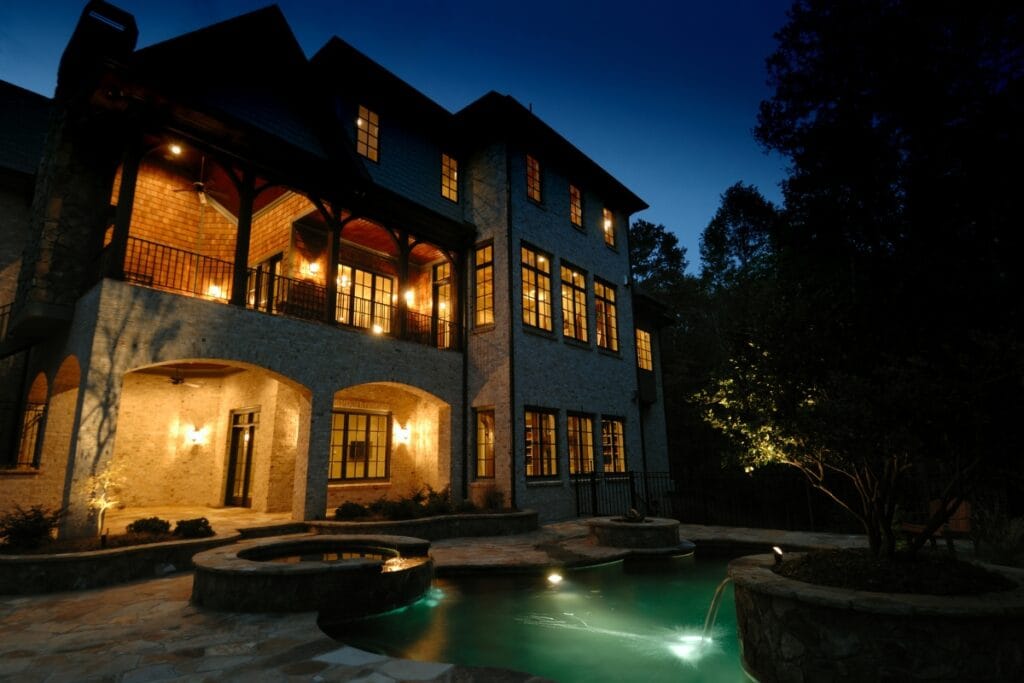
Choosing the best outdoor lighting involves more than picking fixtures off a shelf. Homeowners should work with companies known for reliable products, skilled installation teams, and strong customer support. Local firms with years of experience understand Georgia’s climate challenges—humidity, storms, and high temperatures—and can recommend materials and designs that hold up under those conditions. Positive online reviews, industry certifications, and a proven portfolio of past projects offer the best assurance that a provider will deliver quality work and dependable service.
What Should You Look for in a Georgia Outdoor Lighting Company?
A reputable lighting company begins with a comprehensive consultation and site analysis. Look for providers that send a trained specialist to your property to assess layout, architecture, and yard features before proposing a plan. They should explain why certain fixtures work better in Georgia’s weather—choosing rust-resistant metals, sealed housings, and UV-stable finishes—and how energy-efficient LEDs and smart controls will reduce long-term costs.
After installation, dependable companies offer clear operating instructions, routine maintenance options, and a warranty on both labor and fixtures. These services give homeowners peace of mind that any issues—whether a blown transformer or a broken bulb—will be handled promptly and professionally.
Where to Buy Quality Outdoor Fixtures in Georgia
Homeowners can find quality fixtures at local lighting showrooms that specialize in exterior products. These shops often stock weather-rated designs from reputable manufacturers and can provide hands-on demonstrations of spotlights, wall sconces, and in-ground uplights. Electrical supply houses also carry commercial-grade components—transformers, timers, and cable—that meet code requirements and ensure a safe installation.
For those who prefer shopping online, established retailers offer extensive catalogs with detailed specifications and reviews from other Georgia customers. Specialist providers like Legacy Landscape Design sell custom packages that include both fixtures and installation services, making it easy to compare options and pricing under one roof. When researching purchases, measure fixture dimensions, check IP ratings for water resistance, and look for ENERGY STAR certifications to guarantee energy efficiency.
Frequently Asked Questions
Q: What are the primary benefits of installing the best outdoor lighting on my Georgia home? A: The best outdoor lighting boosts curb appeal, enhances security, and extends outdoor living spaces. Energy-efficient fixtures lower utility bills and withstand Georgia’s weather conditions.
Q: How do I ensure my outdoor lighting is weather-resistant? A: Choose fixtures with IP65 or higher ratings, waterproof housings, UV-resistant coatings, and corrosion-resistant materials to handle humidity and heavy rains.
Q: Can I integrate smart lighting systems with my existing outdoor installation? A: Yes, many modern systems support remote control, scheduling, dimming, and real-time energy monitoring via smart technology.
Q: How often should outdoor lighting maintenance be performed? A: At least once a year, with additional checks after severe weather. Regular cleaning, bulb replacement, and wiring inspections are key.
Q: Are professional installations more cost-effective compared to DIY projects? A: While the upfront cost may be higher, professional installations provide long-term savings through better efficiency, durability, and reduced repair needs.
Q: What energy-saving technologies are most beneficial for the best outdoor lighting? A: Energy-efficient LEDs, solar-powered options, and smart controls such as motion detectors and dimmers help reduce consumption and costs.
Q: How can I customize outdoor lighting to complement my home’s design? A: Select fixtures that match your architectural style and use adjustable brightness and color temperature settings. Professional design services can create tailored lighting plans that highlight unique features.
Final Thoughts
A well-planned outdoor lighting scheme can turn your Georgia home into a welcoming sanctuary after dark—enhancing safety, curb appeal, and your family’s enjoyment of outdoor spaces. At Legacy Landscape Design, we specialize in custom landscape solutions that highlight your property’s best features while providing energy-efficient performance. Ready to brighten your nights and elevate your home’s aesthetics? Call us today at 770-427-2026 or fill out the form on our website to get started and light up your landscape in style.
